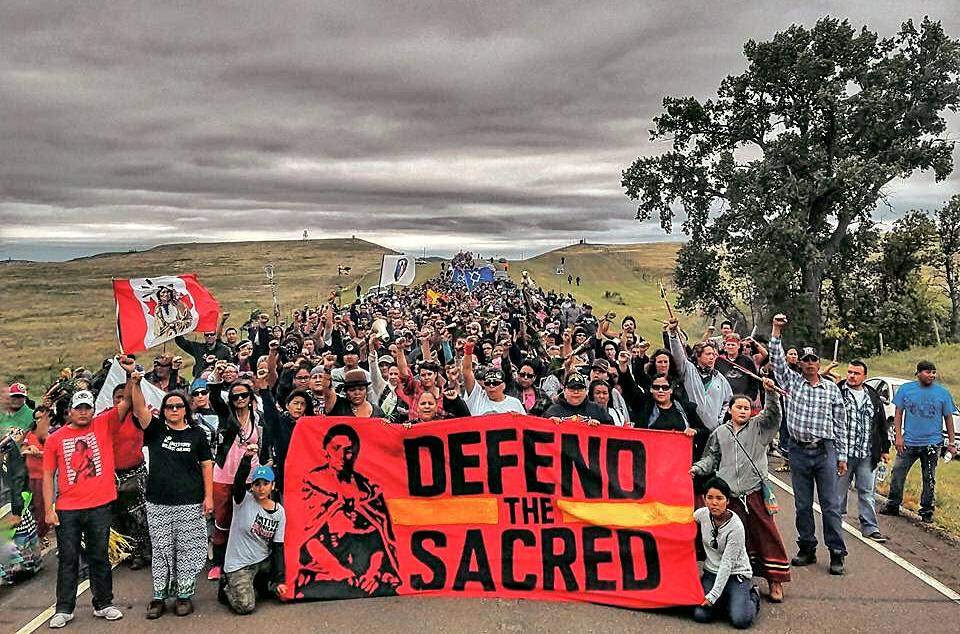The Standing Rock protests against the Dakota Access Pipeline (DAPL) became a landmark event in the struggle for indigenous rights and environmental justice. Beginning in early 2016, the protests drew attention to the environmental risks and violation of indigenous sovereignty posed by the pipeline. The movement also highlighted broader issues of economic exploitation and environmental degradation inherent in capitalist development practices. This essay explores the Standing Rock protests, their origins, key events, and their significance in the context of indigenous resistance and anti-capitalist solidarity.
Origins and Objectives
The Dakota Access Pipeline was designed to transport crude oil from the Bakken oil fields in North Dakota to Illinois, crossing several states and numerous bodies of water. The proposed route included a segment near the Standing Rock Sioux Reservation, raising concerns about water contamination and the destruction of sacred sites. The Standing Rock Sioux Tribe, along with other indigenous groups, environmentalists, and allies, initiated a protest to halt the construction of the pipeline.
Key Events and Actions
The Standing Rock protests began in April 2016 with a small group of indigenous youth running a relay from North Dakota to Washington, D.C., to raise awareness. This act of resistance inspired the establishment of the Sacred Stone Camp near the construction site, which quickly grew into a large encampment of water protectors.
Throughout the summer and fall of 2016, thousands of people from diverse backgrounds joined the protest, creating a powerful coalition. Key events included:
- Direct Actions and Blockades: Protesters engaged in direct actions such as blocking construction equipment, chaining themselves to machinery, and staging sit-ins. These actions aimed to physically prevent the continuation of pipeline construction.
- Legal Battles: The Standing Rock Sioux Tribe filed lawsuits challenging the pipeline’s approval process, citing violations of the National Historic Preservation Act and the Environmental Protection Act.
- Police Repression: The protests faced significant police repression, including the use of tear gas, rubber bullets, water cannons in freezing temperatures, and mass arrests. Despite this, the resolve of the water protectors remained strong.
Anti-Capitalist Solidarity
The Standing Rock protests were not only about protecting water and indigenous rights but also about challenging the capitalist practices that prioritize profit over people and the environment. The pipeline symbolized broader issues of resource extraction, environmental destruction, and the marginalization of indigenous communities.
- Economic Exploitation: The pipeline represented the ongoing exploitation of natural resources by large corporations at the expense of local communities and ecosystems. The resistance at Standing Rock highlighted the need for sustainable and equitable economic practices.
- Environmental Justice: The protests underscored the disproportionate impact of environmental degradation on indigenous and marginalized communities. This aligns with anti-capitalist critiques of how capitalist development often externalizes environmental costs to vulnerable populations.
- Global Solidarity: The movement at Standing Rock inspired and connected with other indigenous and environmental struggles worldwide. It fostered a sense of global solidarity among those fighting against similar forms of exploitation and environmental harm.
Impact and Legacy
The Standing Rock protests had significant immediate and long-term impacts:
- Policy Changes: Although the pipeline was eventually completed under the Trump administration, the protests led to heightened scrutiny of such projects and influenced future environmental and indigenous policies.
- Awareness and Advocacy: The movement raised global awareness about indigenous rights and environmental justice. It also strengthened alliances between indigenous groups and environmental activists, creating a powerful force for future advocacy.
- Cultural Resurgence: The protests sparked a resurgence of indigenous culture and identity, with many participants reconnecting with their heritage and traditions.
Conclusion
The Standing Rock protests against the Dakota Access Pipeline represent a pivotal moment in the struggle for indigenous rights and anti-capitalist solidarity. By challenging the economic and environmental injustices perpetuated by capitalist development, the movement highlighted the need for systemic change. The legacy of Standing Rock continues to inspire and inform resistance movements worldwide, emphasizing the power of solidarity and collective action in the fight for a just and sustainable future.



